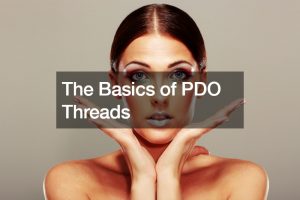Hair extensions are a great way to transform your look. They allow you to experiment with different hairstyles and add volume to otherwise lifeless hair.
Getting the right hair extensions requires a bit of research. Unfortunately, some information that is thrown around is not facts. If you’re new to the hair extensions game, it can get confusing to digest all this information and figure out which ones are true. To help you with your journey, we gathered common hair extension myths and debunked them below.
Myth #1: Hair extensions are only for length.
Most people think hair extensions are solely used for increasing the length of your hair. But in reality, they offer more than that.
Extensions offer an instant solution to premature thinning and hair loss. They can add fullness to your hair and conceal areas with thinner hair or gaps in length.
Additionally, if you’ve always wanted to try different colors in your hair but you’re worried that it might look wrong or cause damage, extensions are perfect for you. You can sport an ombre or pop in a few highlights for a special occasion. With extensions, you don’t have to worry about excessive bleaching or the long-term commitment that comes with a new hairdo. The best thing about wearing extensions is you can easily take them off if you’re unsatisfied with the results.
Myth #2: Hair extensions are painful and uncomfortable.
This idea is not exact. Some semi-permanent hair extensions like tape-ins and micro-rings require either heat or glue for the installation process. These can cause a bit of discomfort during application and take some time to complete. But if a professional stylist does them, you won’t have to endure any pain at all.
Skin wefts involve braiding your hair into tight cornrows that can cause a bit of strain on your scalp. But they’re generally painless as long as you have them adjusted regularly by a certified expert.
 Myth #3: Hair extensions are damaging to natural hair.
Myth #3: Hair extensions are damaging to natural hair.
Hair extensions are not damaging as long as they’re applied and taken care of the right way. Similarly, choosing the appropriate method for your hair type and lifestyle can be the difference between stunning locks and limp hair.
A professional stylist should be able to advise you on the safest application option for your hair. They will take into account the health of your roots and other growth patterns to give you the best results.
Extensions require specific aftercare. Unlike your natural hair, they don’t get nourishment from your scalp, which makes them more prone to dryness, matting, and breakage. That means that it’s crucial to maintain your extensions even better than you would your natural hair. Sticking to alcohol-free hair, hydrating hair products, for example, would keep your extensions thick and strong. Using the right brushing techniques and avoiding heat styling tools will make them last longer.
For many women, hair is a form of self-expression. Wearing extensions steps up your hair game and gives you the courage to try different styles. With proper application and maintenance, extensions can empower you to look and feel good about yourself.





